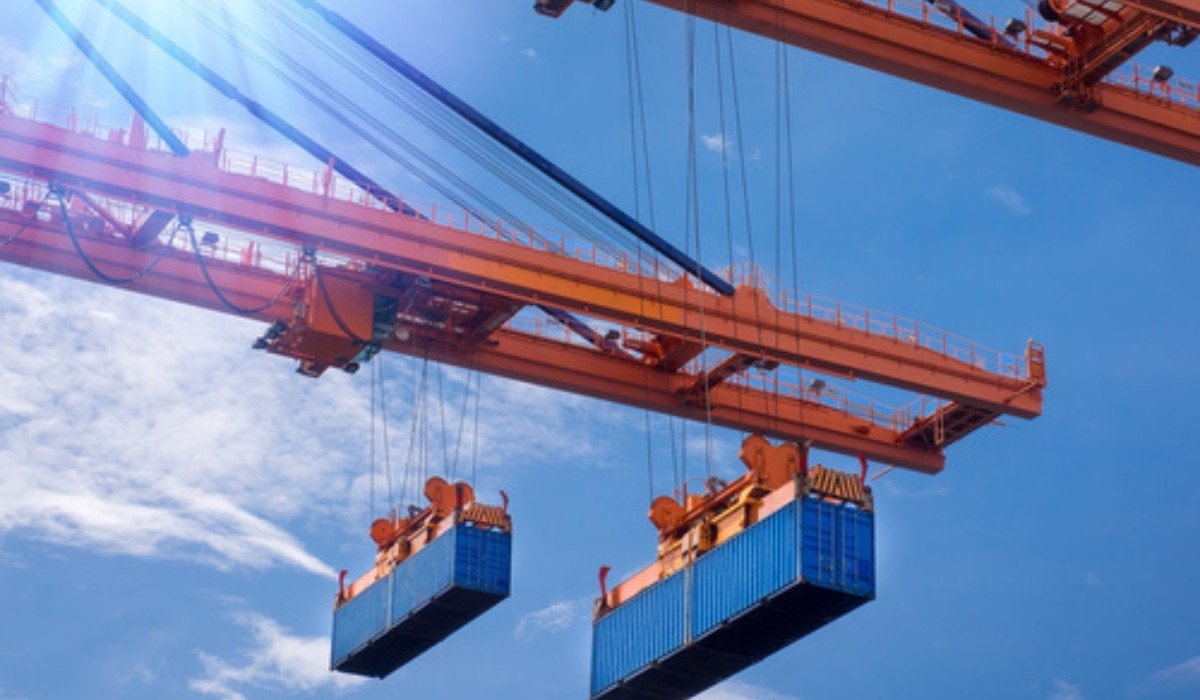A crawler crane is a heavy-duty, mobile crane that is used in a wide range of construction and industrial applications. Unlike other types of cranes, crawler cranes are mounted on tracks, which allow them to move around a site easily and quickly, even on rough or uneven terrain.
Crawler cranes are typically used for large-scale projects, such as the construction of high-rise buildings, bridges, and other infrastructure. They are known for their high lifting capacity and stability, which allows them to lift and move heavy loads with precision and control.
One of the key advantages of crawler cranes is their versatility. They can be equipped with a variety of attachments and accessories, such as booms, jibs, and winches, which allows them to perform a wide range of tasks, from lifting and moving materials to demolition and excavation.
Crawler cranes are also designed to be safe and reliable, with features such as load monitoring systems and advanced control systems that ensure that they operate within safe limits. They are operated by skilled professionals who undergo extensive training and certification, which helps to ensure that they operate safely and efficiently.

Source: Pinterest
Crawler crane: Design and components
Here are some key components and design features of a crawler crane:
Tracks: Crawler cranes are mounted on tracks, which are used to move the crane around the job site.
Boom: The boom is the main structural component of the crane and is used to lift and move heavy loads.
Jib: The jib is an extension of the boom that allows the crane to lift loads to greater heights and distances.
Counterweights: Counterweights are used to balance the crane and prevent it from tipping over during operation.
Cab: The cab is where the crane operator sits and is equipped with controls for operating the crane.
Engine: Crawler cranes are powered by a diesel engine, which provides the power to move the tracks and operate the crane.
Hydraulic system: The hydraulic system is used to control the movement of the crane, including the boom, jib, and tracks.
Load monitoring system: Crawler cranes are equipped with a load monitoring system that helps the operator to ensure that the crane is operating within safe limits.
Counter-rotation system: Some crawler cranes are equipped with a counter-rotation system that allows them to turn in place, which can be useful in tight job sites.
Transportability: Many crawler cranes are designed to be easily disassembled and transported to different job sites, which makes them a popular choice for contractors who need to move the crane frequently.
Crawler crane: Applications
Construction: Crawler cranes are commonly used in building construction, road construction, and infrastructure projects, such as the construction of dams and bridges.
Oil and gas: Crawler cranes are often used in the oil and gas industry for tasks such as drilling and rigging.
Mining: Crawler cranes are used in mining operations to move and lift heavy materials and equipment.
Shipbuilding: Crawler cranes are used in shipyards to lift and move heavy ship components.
Wind turbine installation: Crawler cranes are commonly used in the installation of wind turbines, which require the lifting of heavy turbine components to great heights.
Demolition: Crawler cranes are often used in demolition projects to dismantle buildings and structures.
Emergency services: Crawler cranes can be used in emergency situations, such as in disaster response efforts to clear debris and lift heavy objects.

Source: Pinterest
Crawler crane: Advantages
Mobility: Crawler cranes are mounted on tracks, which allows them to move easily on rough or uneven terrain and to access difficult-to-reach job sites.
Lifting capacity: Crawler cranes are designed to lift and move heavy loads with precision and control, making them an essential tool for large-scale projects.
Versatility: Crawler cranes can be equipped with a variety of attachments and accessories, such as booms, jibs, and winches, which allows them to perform a wide range of tasks, from lifting and moving materials to demolition and excavation.
Stability: Crawler cranes are known for their stability, which allows them to lift and move heavy loads with precision and control, even in windy or unstable conditions.
Efficiency: Crawler cranes are designed to be efficient, with advanced control systems that help to reduce fuel consumption and improve overall performance.
Safety: Crawler cranes are equipped with advanced safety features, such as load monitoring systems and anti-tip technology, which help to ensure that they operate within safe limits and minimise the risk of accidents.
Reliability: Crawler cranes are built to be durable and reliable, with high-quality components and advanced engineering that help to minimise downtime and reduce maintenance costs.
Crawler crane: Disadvantages
Cost: Crawler cranes can be expensive to purchase or rent, which can be a barrier for smaller companies or those with limited budgets.
Size and weight: Crawler cranes are large and heavy, which can make them difficult to transport to different job sites, and may require special permits or equipment.
Environmental impact: Crawler cranes consume fuel and emit exhaust, which can contribute to air pollution and greenhouse gas emissions.
Limited manoeuvrability: While the tracks on a crawler crane provide excellent mobility on rough or uneven terrain, they may not be able to navigate tight spaces or narrow job sites as well as other types of cranes.
Noise: Crawler cranes can be noisy during operation, which can be a concern for nearby residents or businesses.
Training and certification: Operating a crawler crane requires specialised training and certification, which can be a barrier for some workers or companies.
Safety considerations: While crawler cranes are equipped with advanced safety features, they still require skilled operators and strict adherence to safety protocols to ensure safe operation.
FAQs
What is the maximum lifting capacity of a crawler crane?
The maximum lifting capacity of a crawler crane can range from a few hundred tons to over 3,000 tons.
What is the typical boom length of a crawler crane?
The boom length of a crawler crane can range from around 50 metres to over 100 metres.
What are some common applications for crawler cranes?
Crawler cranes are commonly used in construction, bridge building, shipbuilding, and wind turbine installation, among other applications.
| Got any questions or point of view on our article? We would love to hear from you.
Write to our Editor-in-Chief Jhumur Ghosh at jhumur.ghosh1@housing.com |
Housing News Desk is the news desk of leading online real estate portal, Housing.com. Housing News Desk focuses on a variety of topics such as real estate laws, taxes, current news, property trends, home loans, rentals, décor, green homes, home improvement, etc. The main objective of the news desk, is to cover the real estate sector from the perspective of providing information that is useful to the end-user.
Facebook: https://www.facebook.com/housing.com/
Twitter: https://twitter.com/Housing
Email: editor@housing.com












